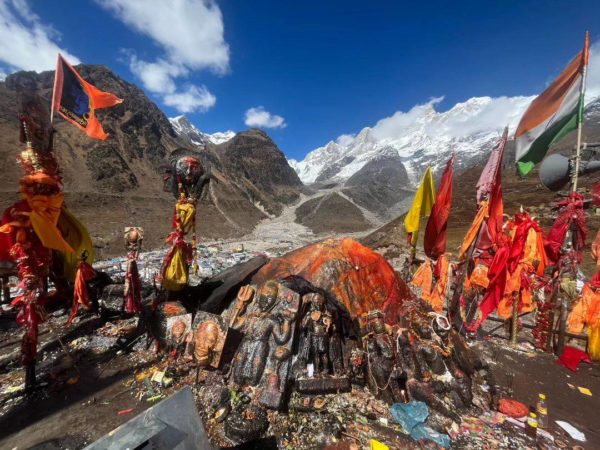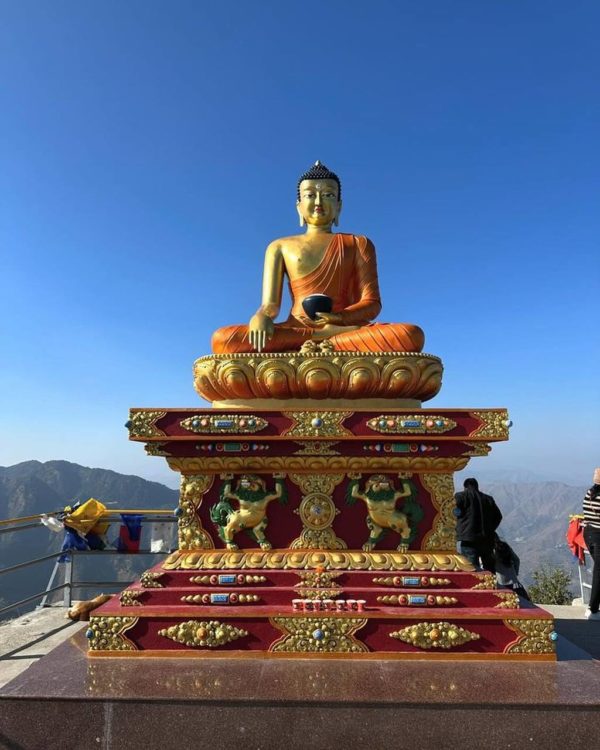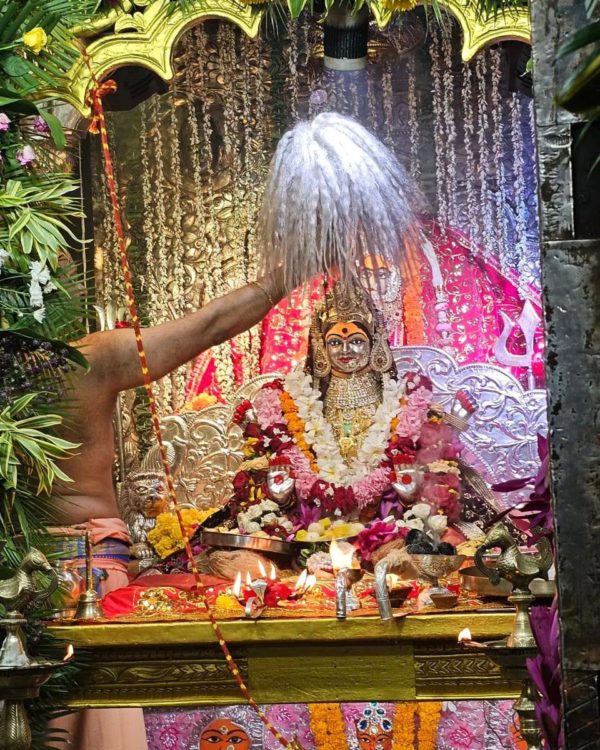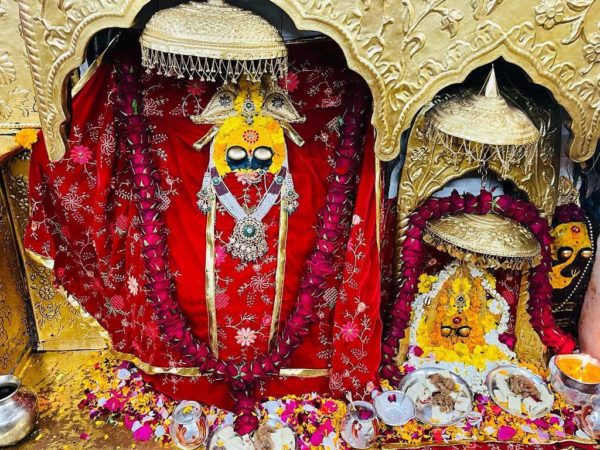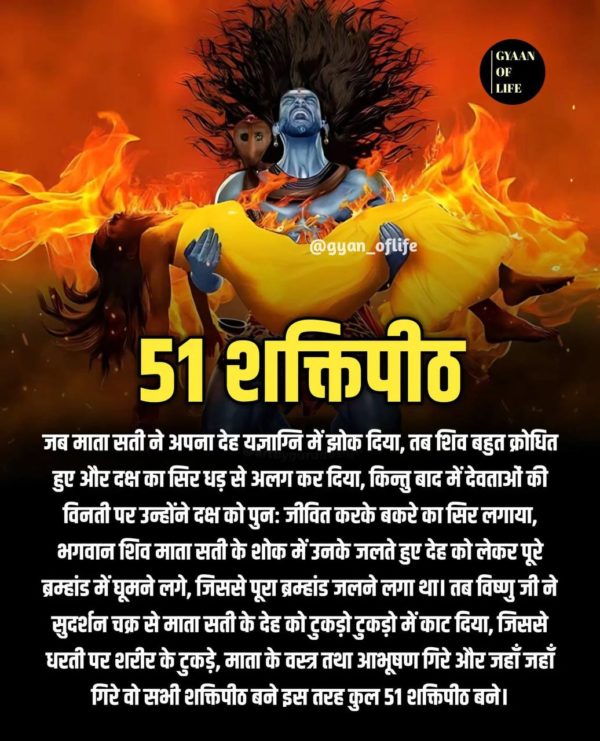SHAKTIPEET, ADI SHAKTI, THE FEMALE BEGINNING
9 Devi Temples in the Himalayas.
Discover the power of feminine energies on this spiritual journey to 9 Devi temples.
You will see ancient shrines dedicated to the Mother Goddess and experience her blessings.
You will visit the spiritual atmosphere of the Himalayas.
And try for yourself the power of the divine feminine energy of these places.
Learn about Hindu mythology and culture, enjoy stunning nature and views.
About the tour:
SHIVA symbolizes the male beginning.
SHAKTI symbolizes the feminine, the principle that activates strength and energy.
Other terms for these basic principles are PURUSHA and PRAKRITA; Purusha is consciousness and Prakriti is nature.
Lord Shiva is usually depicted with a trident, which symbolizes the trinity of Ishwara, Purusha and Prakriti.
Ishvara is the omnipresent, eternal, formless divine principle; Purusha is Atma (soul),
and Prakriti is a manifestation, nature.
If we use electric light to explain their relationship-
The electric current which is the source of light is Ishvara;
light is Purusha,
and the illuminated object is the Prakriti.
Shakti (or Prakriti) means energy, force, movement, change, nature.
This is the maternal principle – a provider, abundance.
In both the human and animal kingdoms, a mother offers nourishment, warmth, and safety.
There is no greater love than a mother’s love. The mother carries and feeds the child in her body. When he is born, she provides him with her mother’s milk and raises him, sacrificing herself, until he is independent.
SHIVA (or Purusha), on the other hand, is pure consciousness – the unchanging, limitless and steadfast observer. Purusha has no desires; they are inherent in Prakriti alone. Purusha is the clean blank screen on which Prakriti projects her colorful film.
Shiva and Shakti are manifestations of a single divine consciousness – different sides of the same coin.
In many images each of these two primal forces is depicted as half of the same image; one side is female, the other is male.
The left side is the Divine Mother, Parvati, the “feminine” energy, and the right side represents Shiva, the “masculine” consciousness.
Temples and Name of the Goddess are dedicated to various aspects of feminine energy, including strength, fertility, love and protection.
- Maa Vaishno Devi
- Maa Dhari Devi
- Maa Naina Devi
- Jwala Devi
- Sheetla Devi
- Chamunda Devi
- Chintpurni Devi
- Brajeshwari Devi
- Mansa Devi
- Bijli Mahadev
Tour program:
1. Vaishno Devi Temple in Katra, Jammu.
Maa Vaishno Devi is also known as Mata Rani. An ancient cave temple in the Trikut Hills in Katra, Jammu and Kashmir.
This temple is a great place for tourists. The Vaishno Devi Temple is one of the most revered Hindu temples dedicated to the energy of Shakti, the manifestation of the Mother Goddess.
2. Maa Vaishno Devi is the second most visited shrine in India after the Tirupati temple. To reach the temple, one has to climb a 12 km asphalt road from Katra to Vaishno Devi. A regular helicopter service is also available from Katra to Sanji Chhat. Undoubtedly, this is one of the most famous temples in Jammu. The main temple is situated at an altitude of about 5,200 feet above sea level.
3. Maa Dhari Devi Temple in Dang Chawri, Uttarakhand.
Beautifully located on the banks of the Alaknanda River in the Garhwal district of Uttarakhand. The temple of Maa Dhari Devi is one of the heavenly abodes of 108 shaktis, the temple is dedicated to the goddess Kali. Devotees believe that the mother idol present in this temple changes its form thrice a day. In the morning, the idol looks like a girl, in the afternoon – a young woman, in the evening – an old woman. This belief makes the Dhari Devi temple one of the most mysterious temples in India. Maa Dhari Devi Temple is located near Srinagar and Rudraprayag, one of the five Prayags of India.
4. Maa Naina Devi in Bilaspur District, Himachal Pradesh.
According to Hindu mythology, Lord Vishnu cut open the lifeless body of Sati (Shiva’s wife)
using his Sudarshana -chakra for 51 parts to save the universe and restore sanity to Shiva.
Maa Sati’s eye fell on this place, where the temple of Naina Devi Ji was built.
Raja Bir Chand built this temple in the 8th century, in the name of Naina Devi. The temple is considered as one of the important temples of Bilapura.
The Maa Naina Devi Ji Temple is situated on a beautiful hillock called Naina Devi which offers a magnificent view of the Gobind Sagar Lake. You can take a cable car ride to reach the top of the temple.
5. Jwala Devi in the town of Jawalamukha, Himachal Pradesh.
Energy Shakti Peetha Jwala Devi Temple is one of them in India.
Peacefully located in the lower Himalayas in Jawalamukhi, Kangra District, Himachal Pradesh. Jwala Ji Temple is one of the oldest temples in India and according to legend, Sati’s tongue fell here and the shrine of Jwala Devi Ji was built. It is believed that if one sincerely visits this temple, Maa Jawala will fulfill all the wishes of the devotee.
6. Sheetla Devi in Dharamsala, Himachal Pradesh
It is one of the most famous temples, popular due to the large number of devotees who flock here every year to immerse themselves in spirituality. Beautifully located in a small village in Himachal Pradesh – Dharamsala Manhattan, the temple is dedicated to Goddess Durga.
It is believed that Maa Sheetla quickly fulfills a wish made from the heart and also dispels all stress and worries. This is one of the famous temples located in Himachal Pradesh.
7. Chamunda Devi in Kangra, Himachal Pradesh
This temple is located in the Kangra district of Himachal Pradesh. Visit the temple to pay your respects to Goddess Chamundi Devi. Several mythological stories associated with this temple make it so special. Chamunda Devi is revered in Himachal as a mother goddess and thus holds immense value in the state. The temple is located near one of the beautiful hill stations in Himachal Pradesh, Dharamsala, which is about 15 km from the temple. According to Hindu mythology, the temple was built on the same spot where Chamunda Devi killed two demons named Shumbh and Nishumbh. According to Hindu mythology, she is one of the seven mother goddesses, also known as Chamundi. Hindu devotees from different regions visit the temple to seek the blessings of Maa Chamunda.
8. Chintpurni Devi in Una District, Himachal Pradesh.
The beautiful shrine of Devi Chinpurni, a form of Maa Durga, is located in the Una district of Himachal Pradesh. It is a beautiful temple situated amidst the great Himalayas and the Shivalik Hills. Chintpurni Devi Temple
is considered one of the holiest shrines in India. It is believed that if a prayer is offered from the heart, Mata Chintpurni will quickly fulfill all wishes and dissolve all worries and stresses of life. The temple is known as one of the 7 main of the 51 Shakti Peethas. Surrounded by beautiful nature and hills, this place is an ideal place for religious renewal.
9. Brajeshwari Devi in Kangra, Himachal Pradesh
Bajreshwari Devi Temple is a popular Hindu pilgrimage site located in the Kangra district of Himachal Pradesh. According to Hindu mythology, the temple is believed to have been built by the goddess Bajreshwari.
10. Mansa Devi in Panchkula, Haryana
Mata Mansa Devi Mandir is located near Majra, a small village in Haryana. The temple is dedicated to Maa Mansi and Hindus hold this shrine in high regard. On the territory of the temple grows a tree, which is considered divine, it is believed that tying the tree with a thread fulfills all the wishes of the devotees.
11. Bijli Mahadev is a sanctuary dedicated to Lord Shiva. At an altitude of 2,452 meters, the sanctuary overlooks the Parvati Valley. This shrine is one of its kind as the Shiva Lingam is occasionally struck by lightning. The sanctuary is named after this miracle, where “Bijli” refers to lightning and “Mahadev” is one of the names of Lord Shiva. The trek to the Bijli Mahadev sanctuary is a three kilometer trek from Chansari village.
There are three explanations for the trek to the Bijli Mahadev shrine. The main reason is related to the fascinating look. The sanctuary is located on the edge of the Parvati valley. On a fresh, clear morning, the sun illuminates this valley with all the shades of iridescence of the sky.
This trip will give you unforgettable memories!
The tour is organized by a professional guide who will tell about the history and culture of each temple.
You will travel in comfortable cars, and accommodation will be arranged in hotels or guest houses.
To learn more about the tour, contact us!
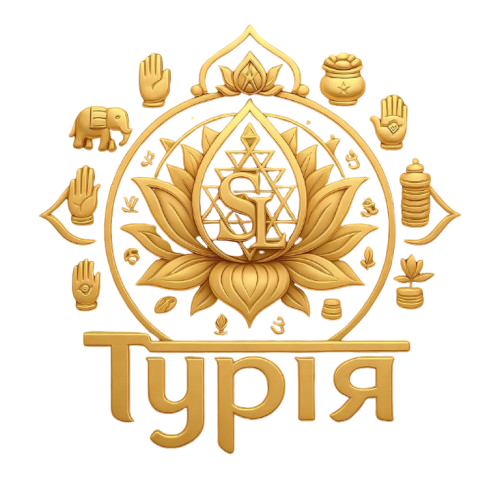

 Українська
Українська Русский
Русский
